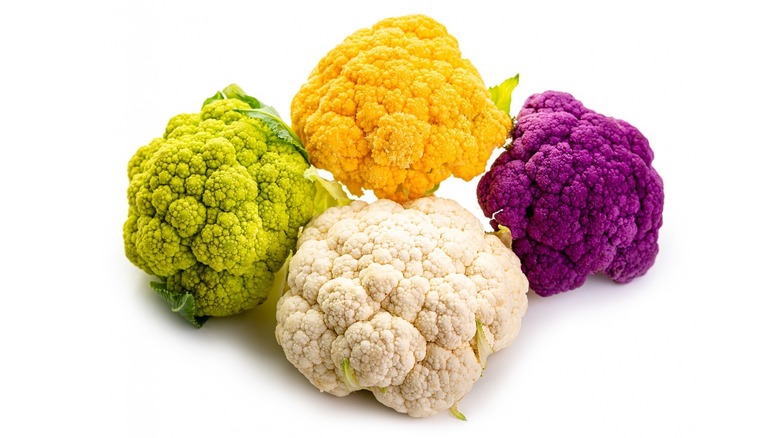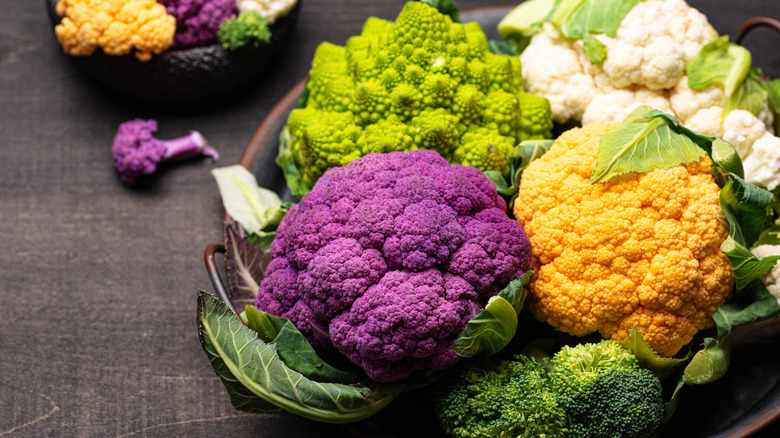Cauliflower Comes In More Colors Than You Think
When someone mentions cauliflower, a few things may immediately come to mind. For those who aren't fans of the cruciferous vegetable, the first thought might be to quickly change the subject — or to run for the hills. Folks who do like it probably happily imagine cauliflower prepared in any number of creative ways: Shredded into rice, sliced into steaks and roasted, tossed raw in a salad, or transformed into pizza crust. Whether haters or lovers, the one mental image that most folks likely share is of pale white heads of cauliflower that practically glow when nestled alongside green produce at the grocery store.
Well, get ready for a shock, because sometimes cauliflower ditches its pallor for more exciting shades. Take a closer look in your produce aisle and you might just spot bright, orangey-yellow heads of cauliflower. On your next trip to the farmer's market or your local produce stand, cauliflower may come in a robust variety of hues, like dazzling purple or vibrant green. Outrageous! Where does colorful cauliflower come from? Are they artificial or do they actually grow that way?
Colorful cauliflower varieties have additional nutrients
It's understandable to look at multicolor heads of cauliflower with some skepticism and questions since the white variety is the one most familiar to us. The good news is that, according to Modern Farmer, purple, orange, and green cauliflower are not the result of injected dyes or toying with genetically modified organisms (or GMOs.) They're simply different varieties of the vegetable with higher amounts of naturally-occurring phytochemicals that create color: Beta-carotene can be found in orange cauliflower as well as in carrots; chlorophyll creates the green in leaves and in green cauliflower. Anthocyanins are responsible for purple cauliflower and are the same compounds found in red wine, blueberries, and raspberries. Farmers and growers for many years bred and sold only white cauliflower, however, there's more interest now in heirloom fruits and vegetables that have stunning colors and shapes. And that's great news for colorful cauliflowers.
While all cauliflower is a healthy choice, purple, green, and orange types have even more nutrients — the very ones that give them their color. The beta-carotene in orange vegetables is beneficial for eye health. Chlorophyll is considered an antioxidant, as are the anthocyanins in purple produce. Antioxidants are believed to help protect the body's cells against damage and disease.

